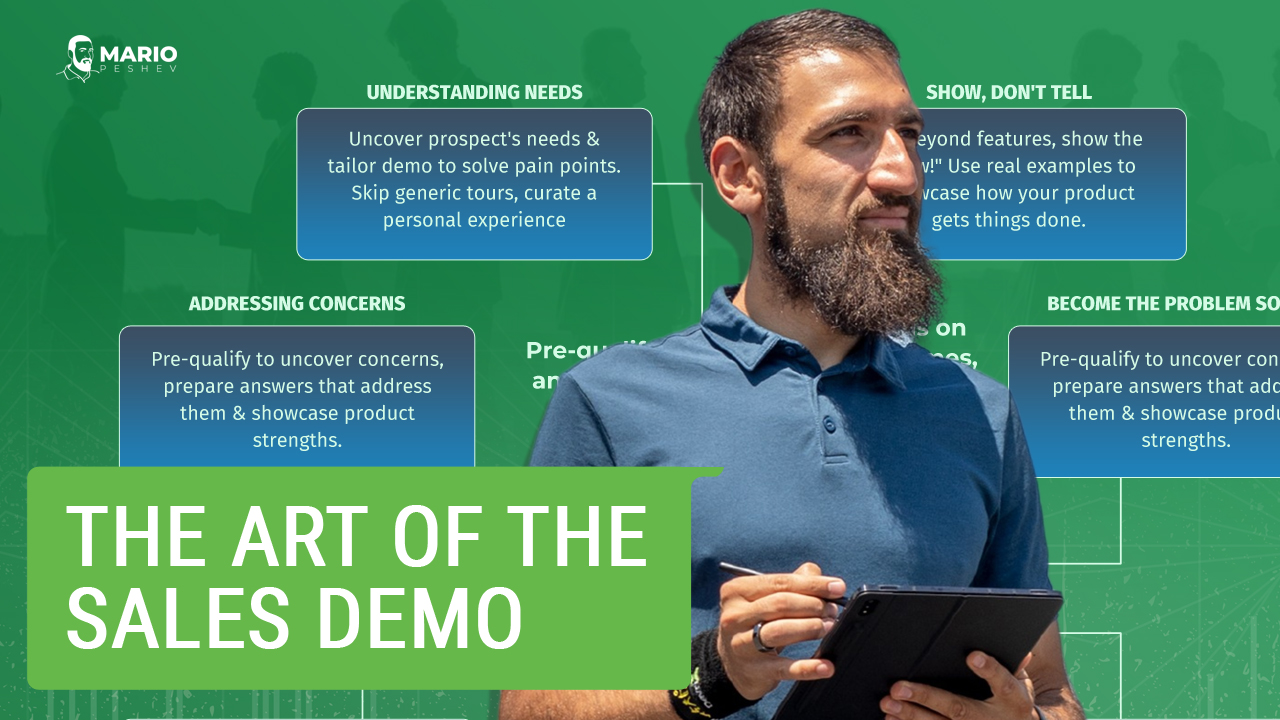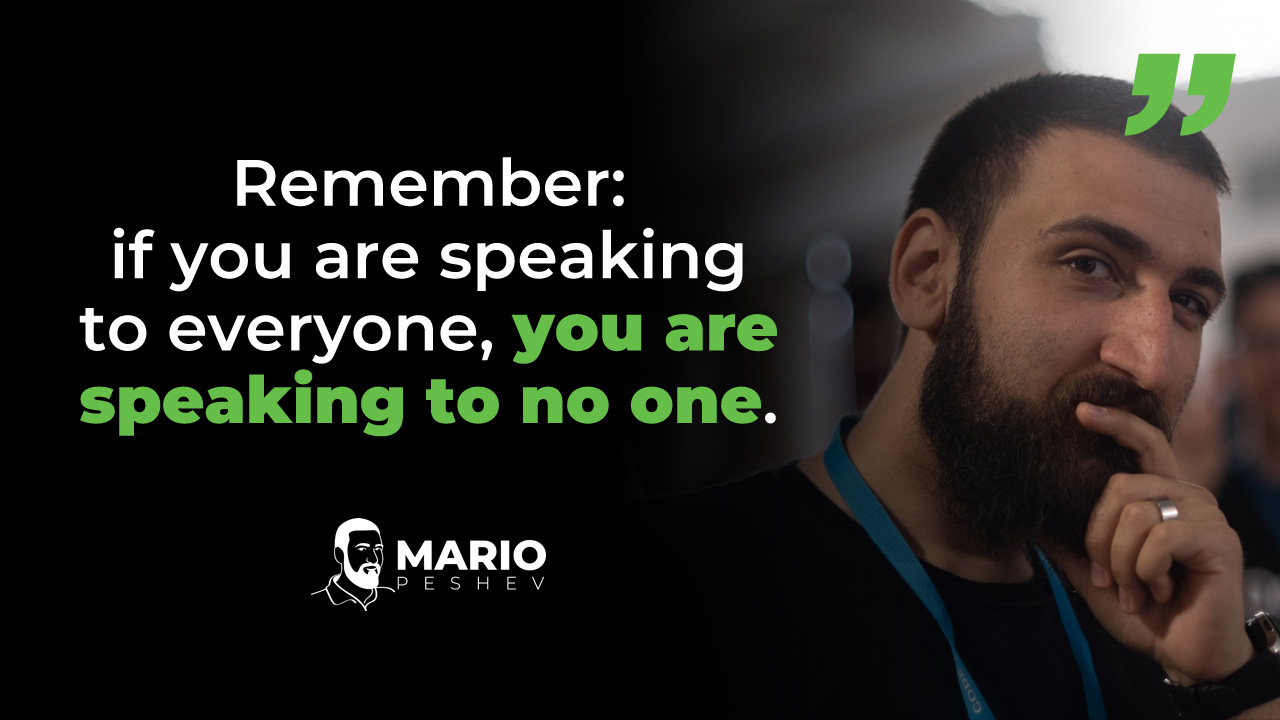For people who are uncomfortable with direct sales contact, conducting business outreach might be a compelling alternative to cold-calling; however, when adopting business outreach strategies, it’s crucial to take into account the impact a “strategy” may have on your brand.
As an introvert, I’ve spent the majority of my entrepreneurial life mastering the techniques of inbound marketing.
But avoiding business outreach forever isn’t sustainable — especially in the early days where SEO is practically non-existent and your social-media followers primarily represent your “friends and family” circle.
Research led by ValueSelling Associates, Inc reports that 48% of sales professionals are afraid of cold calling. The art of making a great first impression in the first 20 to 30 seconds and taking the lead further down the funnel requires practice and resilience, which led to the further development of automated tools, text bots, and outreach systems plugging into exported lists of LinkedIn contacts.
But every entrepreneur feels for the efforts of a sales representative — or any outreach person (be it in marketing or recruitment). What really draws the line, however, is an inappropriate message that throws the conversation off — and can negatively impact the brand’s perception in the long run.
While receiving 8:40 a.m. cold calls every other Monday isn’t among the best ways to start the week, here is how to get flagged right away (and why you should avoid these common traps).
(Disclaimer: This post was originally posted on Entrepreneur)

1. Sell Competitive Services
I founded my development agency 11 years ago, and I’ve probably received over 10,000 pitches for development services since.
Even if I can relate with outsourcing firms leasing talent, any cold outreach attempting to sell a solution we offer straight on our homepage is outright automated and shows zero personalization in researching the prospect.
While working with a product founder in the SEO space, I saw a LinkedIn pitch from a direct competitor offering a white-label license to the other product.
Considering that virtually every review website lists down both solutions among the list of top alternatives, it’s one of the best ways to make your business viral on Twitter or across Facebook groups by trying out too hard.
2. Insist On A Meeting Right Away
Unless you found a cure for a rare disease or had an unlimited supply of masks on the day of the first lockdown in 2020, there is no practical reason an executive (or a senior manager) would welcome a random phone call the day after.
Many executives have their week planned ahead of time — some only book meetings in 15 to 25 business days.
There are different variations of this outreach approach:
- Suggesting an urgent meeting within 24 hours.
- Sending two available time slots that fit you best (without considering the other party).
- Proposing meeting hours late at night or very early in the morning.
Warming up a lead takes time, especially when it comes to cold outreach. Some sales reps try to ease the process by sending Calendly links or looping in an automated scheduling bot, but facilitating personalization immediately gets in the way.
Give your leads some breathing room; suggest providing some context or sending some brochures over before insisting on urgent calls.
3. Provide Zero Context
Being secretive isn’t helping out in landing a demo meeting.
A surprising percentage of the automated follow-up LinkedIn messages I receive include something along the lines of: “I work in IT, let’s book some time next week and explore the best way to help you out.”
And last month, a LinkedIn connection request came in from a medical professional.
“I’m a doctor, we need to jump on a call.”
After inquiring about additional details, she insisted on disclosing more over a call.
Needless to say, I archived this message and moved on. Time is valuable, and having to hop on dozens of cold calls monthly would hardly allow any business professional to complete anything else.
Be mindful of the prospect and provide succinct yet sufficient information before moving to a meeting request.
4. Butcher Someone’s Name
Our CTO conducted an experiment and added a random emoji to his LinkedIn name. After assessing the results a month later, he reported that 30% of all outreach messages included the emoji in the initial pitch.
Any seasoned practitioner with access to the internet would immediately realize they have fallen prey to an automated bot. We may be used to receiving robocalls from governmental institutions or a cell provider, but hey, at least they are relevant and personalized.
Some of the corresponding examples include a nickname or an alias used in a forum system instead of the person’s real name. We have all seen this in the context of mass emails among newsletters, but trying to mimic a human message or a LinkedIn outreach deserves a personal touch.
5. Ignore The Application Requirements
Not every outreach is cold — sometimes there is a legitimate reason to touch base, and that’s great.
But missing out on essential details in a request for proposal (RFP) or a social media post really defeats the purpose of trying to connect with a prospect.
Our hiring posts always disclose the location (and the fact that we look for individuals starting full-time employment). At least half of the respondents are business developers or recruitment firms leasing people abroad, completely omitting the details in the post.
This practice is recognized broadly and using freelance networks or job boards often leads to a simple “test” for applicants. An example here is asking applicants to include a random word in the subject line — or pick their favorite color. Application-tracking systems never capture these, and business professionals save time sifting through these ignorant submissions.
6. Offer Something Irrational
While Reddit communities exist solely to mock hilarious spam messages, it’s not uncommon for business professionals to receive an irrelevant outreach proposal that simply does not make any sense.
At least twice a month, I receive a premium InMail offering a low-level job that isn’t fit for my skills (and certainly does not make sense as a serial founder). This includes anything from seasonal jobs for students to entry-level positions in legal or pharmacy.
I have been pitched on trucks in South America, unlimited supplies of integrated chips from Chinese manufacturers, enterprise-grade solutions aimed at Fortune 500 corporations, and everything in between.
Don’t buy an email list and blast every single email right away. While sales outreach is a numbers game, you don’t want to completely demolish the brand value by being intrusive in the wrong circles.
7. Use Generic Templates and Buzzwords
Your outreach message may come out as impersonal and robotic if you use common templates and buzzwords.
Many sales representatives use templates to save time, but if the message is not personalized, the prospect may feel like just another name on a list. Similarly to this, using industry jargon or buzzwords without any context or explanation might make your message unclear and unappealing.
“Dear [Name], I hope you are doing well. As a [industry] professional, I am excited to introduce you to our [product/service]. Our cutting-edge and innovative solution is the best on the market and can help you achieve your business goals.”
The message, for example, is impersonal and generic. Additionally, it makes generalizations about the product or service while using buzzwords like “cutting-edge” and “innovative.”
“Dear [Name], I’m contacting you on behalf of [company]. Our cutting-edge platform can help you optimize your workflow and boost productivity, and with features like AI-powered analytics and real-time data insights, our solution is the ideal fit for your business. Schedule a demo today to learn more!”
In this example, there is no context or explanation provided, just the usage of trendy terms like “state-of-the-art” and “AI-powered.” Additionally, there is no personalization and no clear value proposition for the prospect.
8. Overpromise and Underdeliver
Making false claims during outreach might result in a lack of confidence and disappointment. If you overpromise and underdeliver, you dissatisfy the prospect and spread negative rumors.
To establish a good reputation, be truthful about what you can provide and follow through on your commitments.
Theranos, a tech startup in 2016 but was later on reported for making exaggerated claims regarding the technology used for its blood tests. The product turned proven to be a hoax, despite the company’s claims that it could do hundreds of tests with just a few drops of blood. Accordingly, despite what the corporation said, the technology wasn’t working, and the outcomes weren’t reliable.
This could be a case of a company that made too many promises but couldn’t keep them, which ultimately caused its demise. The company’s reputation reportedly suffered after the controversy. This led to a great deal of bad press, ultimately leading to the company’s demise.
Needless to say, there are so many Theranos stories nowadays and you wouldn’t want to be a part of one.
9. Disrespect The Prospect’s Time
Being disrespectful of a prospect’s time might leave a bad first impression because time is an important resource. This includes:
- sending messages at strange hours
- arriving late for appointments or calls
- not following up right away.
Most of your prospects are busy people with their own priorities, so it’s crucial to keep this in mind when performing business outreach. They might not have the time to listen to every sales presentation that comes their way.
Sending messages or calling a prospect frequently at inconvenient times is one way to disregard their time.
For instance, sending a message at an unexpected time, such as late at night or early in the morning, can be perceived as invasive and leave a bad impression. Furthermore, showing up late for an appointment or phone contact without offering a reason or an apology can make the prospect feel disrespected and undervalued.
Another example is failing to follow up as scheduled. After a call or meeting, if you say you’ll contact the prospect, be sure to do so right away. If you don’t, the prospect can feel irrelevant and they might even start to doubt your dependability and professionalism.
Making a good first impression, earning their trust, and developing long-lasting connections with potential customers require being considerate of their schedules, communicating clearly, and following up promptly.
Respect the prospect’s availability and timetable at all times.
10. Being Overly Aggressive or Pushy
In business, it’s crucial to be self-assured and assertive. But, being overly aggressive or overbearing can turn off potential partners or customers. This can include being overly pushy when setting up a meeting or phone conversation, hammering home your agenda or offering, or using overly harsh language while communicating.
Strike a balance between being self-assured and showing consideration for the prospect’s preferences and time. Here are some examples of being overly aggressive and how you can improve your approach:
Demanding: “Buy this now.”
Better Approach: “Would you like to learn more about this product/service, which may be a good fit for your needs?”
Assumes commitment: “When should I anticipate receiving your order?”
Better Approach: “I wanted to check in with you to see if you had any questions or concerns about the product/service after our conversation.”
Boasting: “I’m the best salesperson in the business!”
Better Approach: Highlight the advantages of the product/service and how it can assist the potential customer.
Often, you do business outreach wrong when you only focus on your business needs.
Focusing only on your needs can alienate people, but a business outreach should be a mutually beneficial exchange. Make sure to demonstrate how your solution can assist a prospect in finding a solution to a problem or achieving a goal. Don’t only concentrate on what you want to market or sell. Instead, concentrate on how you can benefit the prospect.
The Bottom Line
There are several other ways to embarrass yourself and harm the reputation of your business during a business outreach. Trying to contact someone who hasn’t been an employee for years, asking for a random person in the organization you simply found online, or mass emailing a series of group emails in a thread (hoping for a single stakeholder) won’t get you anywhere either.
But, the bottom line is simple. While the shotgun approach would not disappear overnight, add at least some personalization to your business outreach process.
Be mindful of your prospects and spend a few extra minutes confirming that they fit the buyer persona. Check your grammar and construct a simple yet clear message stating the purpose of the business outreach.
Remember, efficiency doesn’t come at the expense of professionalism. Sending generic, impersonal messages or targeting irrelevant contacts wastes your time, damages your reputation, and reflects poorly on your business.
Instead, invest the extra effort in personalized outreach. Take the time to:
- Research your contacts and ensure they’re relevant to your target audience.
- Craft a clear and concise message that highlights the value you offer and sparks genuine interest.
- Proofread your communication for any grammatical errors or typos that can undermine your professionalism.
By replacing the shotgun approach with targeted, personalized outreach, you’ll increase your chances of success, build positive relationships, and ultimately leave a lasting, positive impression on potential clients or partners.
Stay clear of relationships you want to avoid — and make the most out of the remaining list.
Following this simple set of practices will lead to scheduled meetings and slowly grow your pipeline. Just make sure that no one busts you while taking shortcuts early on.
Navigate running a business better with a community of managers, executives, and solopreneurs to grow with. Join us by registering on The Growth Shuttle Community.




